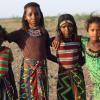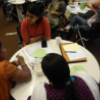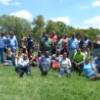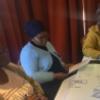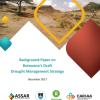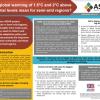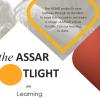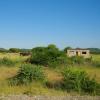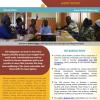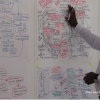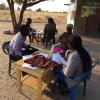Jump to: ASSAR's focus in Botswana | Key insights | Country partners & contact details | News stories | Outputs
Semi-arid regions like eastern Botswana are highly dynamic systems that experience variable and sometimes extreme climates, adverse environmental change, and a relative paucity of and decline in natural resources. Historically, people living in these regions have adopted several coping mechanisms to deal with these conditions. Today, however, many communities exhibit low levels of adaptive capacity due to challenges such as marginalisation, underdevelopment, poverty, inequality, weak governance, maladaptive policies, and increasing population growth. Climate change is expected to augment existing levels of vulnerability as temperatures rise, rainfall decreases, and seasonal climate patterns become more variable.
From 2014-2018, ASSAR’s Botswana team worked in the Bobirwa sub-district of the country to better understand these existing and upcoming challenges. In the last year of the project, we expanded our Vulnerability and Risk Assessment work to Mahalapye (Central District) and to Chobe District. Made up of a team of researchers and practitioners from the University of Botswana, here

Key insights
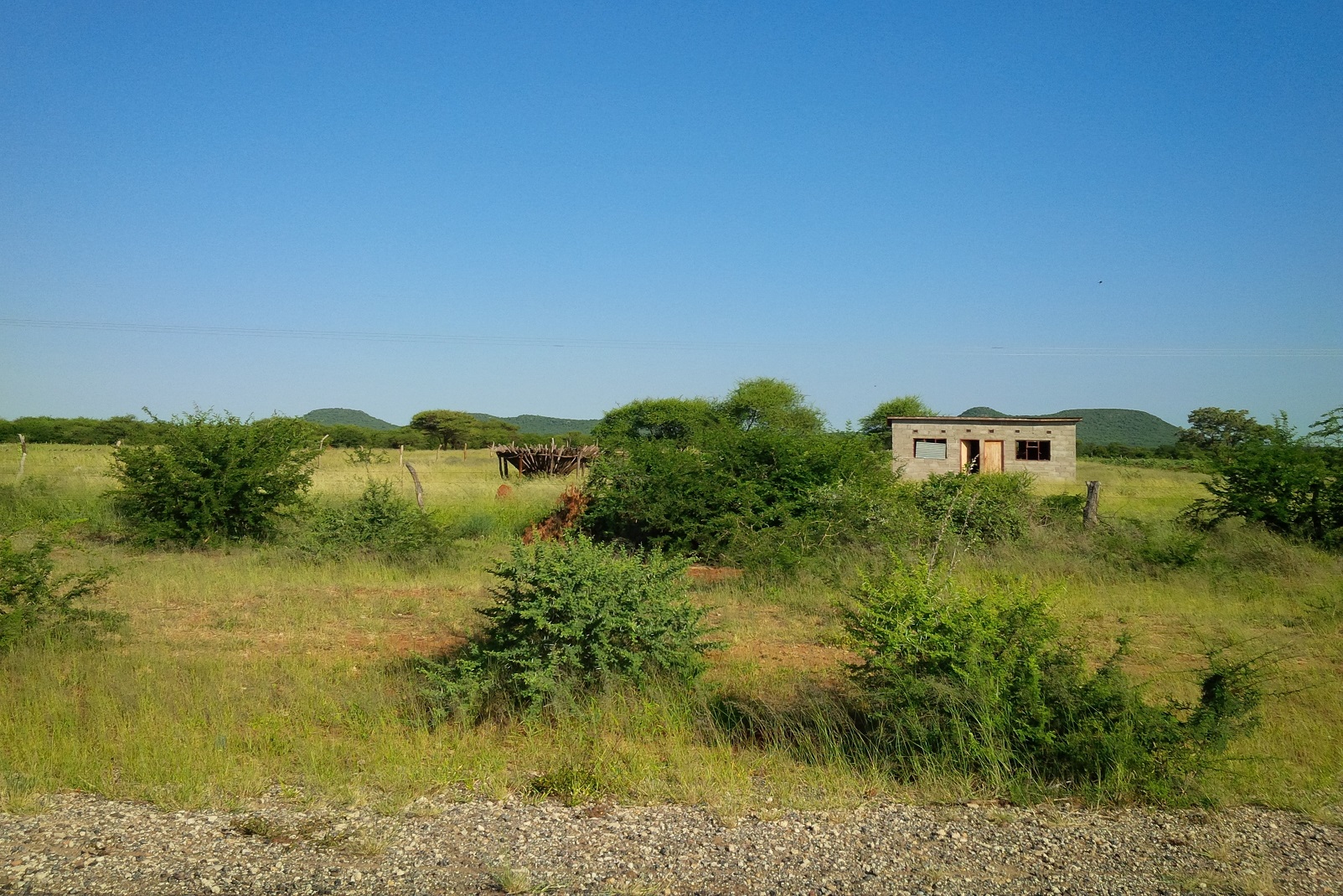
Botswana is one of the countries in Africa that will experience the most extreme changes in temperature and precipitation under global warming scenarios of 1.5°C-3°C above pre-industrial levels. These changes will have significant negative impacts on agriculture and other water-dependent sectors. There is an urgent need for communities and government to respond to climate change with measures that will build resilience and enhance wellbeing.

In recent years, there have been adverse changes in the quantity, quality, distribution and timing of certain ecosystem services due to increasing human pressure and climate change impacts. As dependence on and access to ecosystem services varies by gender, men and women are affected differently by these ecosystem changes. Ecosystem services need to be sustainably and equitably managed through improved monitoring and restrictions on harvesting. Access to alternative livelihood options should also be enhanced.
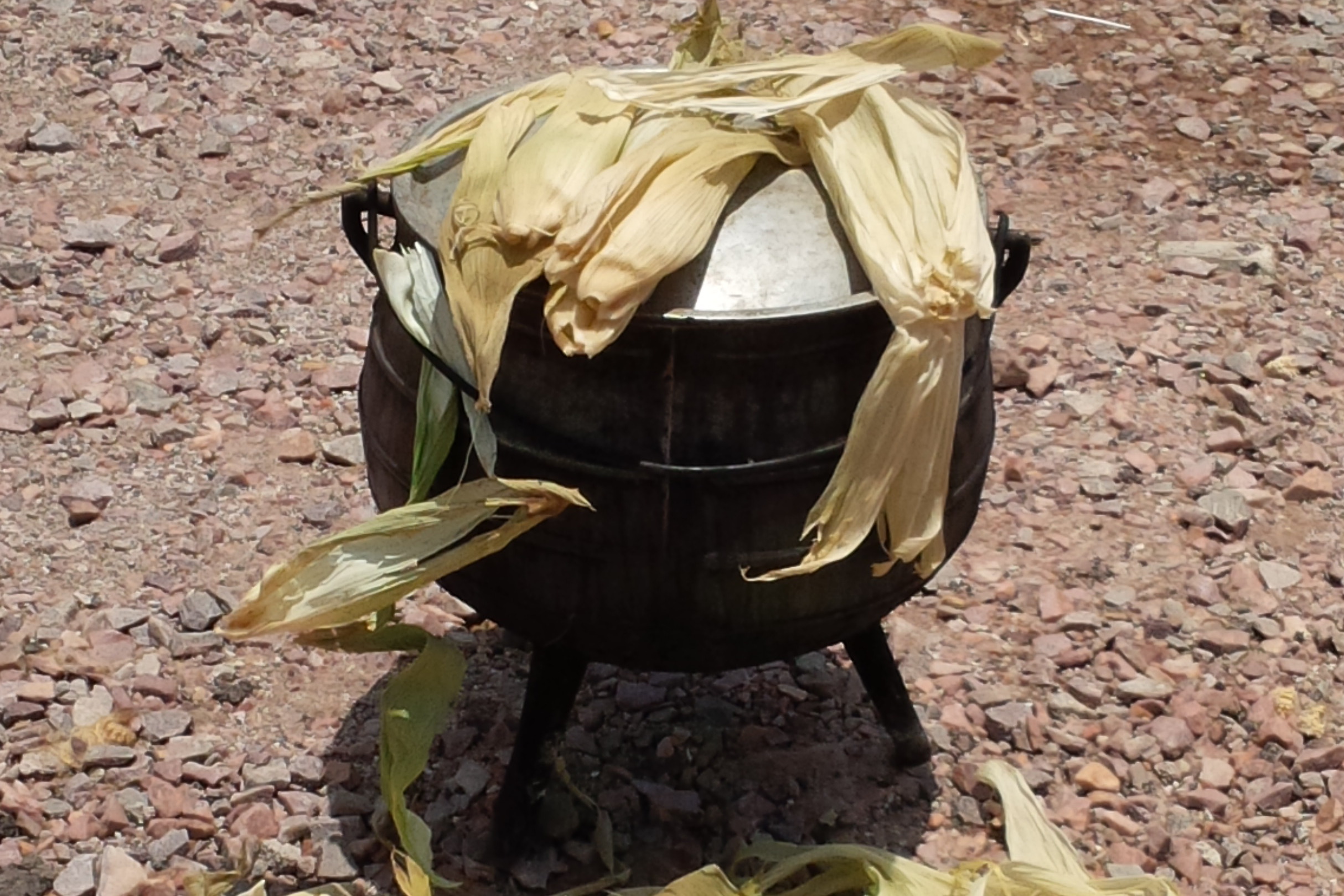
To increase the use of seasonal climate forecasts by people with different values, customs and belief systems, meteorological and place-based climate information need to be integrated through participatory processes with traditional and religious leaders. Forecasts should also be tailored and communicated in a way that is relevant and understandable to farmers, and should include information on what actions farmers should take.

Climate change is causing the frequency, severity, duration and spatial extent of droughts to increase. Yet, institutionally, drought and climate change are managed separately. There is a lack of coordination among departments responsible for drought management, and responses are largely reactive and crisis-driven. While emergency drought response does have an important role to play in drought management, a more proactive and integrated approach is needed to build the longer-term resilience of vulnerable people, ecosystems and the economy.

Grassroots stakeholders have equally valuable contributions to make as those in positions of power in policy, planning and vulnerability assessment processes. Multi-sector and multi-scalar participatory processes that enable collaborative planning and engagement with and between representative and marginalised stakeholders are thus important for ensuring that climate change responses are legitimate, effective, and tailored to the realities of various social groups.
Click here for more detail, and ASSAR's specific recommendations for policy, practice, and research
Country partners and contact details
| Hillary Masundire* (MASUNDH@mopipi.ub.bw), University of Botswana | |
| Mark New (mark.new@uct.ac.za), University of Cape Town | |
| Daniel Morchain (danielmorchain@gmail.com), Oxfam GB | |
| Colleen Magner (magner@reospartners.com), Reos Partners |
Click here to view the regional team members
Related news stories
Related outputs
|
Type |
Author(s) |
Year |
Title |
Details |
Links |
|---|---|---|---|---|---|
| Book chapter | D’Souza, M., Rao, B. and Awashi, S. | 2016 | Community-driven vulnerability assessment and resilience building: Cases from development contexts. | Multi-level climate change planning: Scale, capacity and the ability for local action. | In: S. Moloney, H. Fuenfgeld and M. Granberg (eds.) Local Action on Climate Change. London, UK: Routledge, pp. 92-110. |
| Book chapter | Shaibu, M. T., Alhassan, S. I., Avornyo, F. K., Lawson, E. T., Mensah, A. and Gordon, C. | 2019 | Perceptions and determinants of the adoption of indigenous strategies for adaptation to climate change: Evidence from smallholder livestock farmers in north-west Ghana. | In: J. K. Kuwornu (ed.) Climate Change and Sub-Saharan Africa: The vulnerability and adaptation of food supply chain factors. Vernon Press, pp. 229-249. | |
| Brochure/flyer | ASSAR | 2016 | ASSAR adaptation puzzle. [Puzzle] | Brochure | |
| Brochure/flyer | Basu, R. and Morchain, D. | 2017 | On a road trip to find common ground: Can the goals of the private sector be compatible with sustainable development? [Comic] | ||
| Brochure/flyer | D’Souza, M. and Misquitta, K. | 2018 | From me to we...from mine to ours! A story of how motivation changes people’s perceptions and drives community action. [Story of Change] | ||
| Infographic | ASSAR | 2018 | Challenging assumptions about gender and climate adaptation. | Oshiwambo infographic | |
| Infographic | ASSAR | 2018 | Dreaming of a better life: Let’s recognise and value people’s changing aspirations. | ||
| Infographic | ASSAR | 2018 | Gender is one of many factors that influence how we are impacted by and respond to climate change. | Oshiwambo infographic | |
| Infographic | ASSAR | 2018 | Household relationships help determine whether and how we can – or can’t – respond to pressures. | ||
| Infographic | ASSAR | 2018 | In semi-arid regions, women are not necessarily victims or powerless: They are often diversifying their livelihoods and increasing their agency. | ||
| Infographic | ASSAR | 2018 | Multiscale governance: The paradox of top-down policy design. | French infographic | |
| Infographic | ASSAR | 2018 | Sometimes our interventions can lead to unintended consequences: A well does not always lead to wellbeing. | ||
| Infographic | ASSAR | 2018 | What global warming of 1.5°C and higher means for Botswana. | ||
| Information brief | Adiku, P. and Khan, A. | 2018 | Migration in climate change hotspots: Opportunities and challenges for adaptation. | Collaborative Adaptation Research Initiative in Africa and Asia (CARIAA). | |
| Information brief | ASSAR | 2015 | Planning for climate change in the semi-arid regions of southern Africa. | ||
| Information brief | ASSAR | 2015 | Southern Africa regional diagnostic study: Report summary. | ||
| Information brief | ASSAR | 2015 | Understanding vulnerability and adaptation in semi-arid areas in Botswana. | ||
| Information brief | ASSAR | 2016 | How can we better understand and manage the impacts of droughts? | ||
| Information brief | ASSAR | 2016 | What is Transformative Scenario Planning? | ||
| Information brief | ASSAR | 2018 | Adapting to climate change in semi-arid Botswana: ASSAR’s key findings. | ||
| Information brief | ASSAR | 2018 | Do conservancies enhance the adaptive capacity of communities? Perspectives from ASSAR’s work in Kenya. | ||
| Information brief | ASSAR | 2018 | The gendered challenges of food security: Stories and lessons from ASSAR. | ||
| Information brief | ASSAR | 2018 | What will global warming of 1.5°C and 2°C above pre-industrial levels mean for semi-arid regions? | ||
| Information brief | ASSAR | 2018 | Women, work and adaptive capacity. | ||
| Information brief | ASSAR | 2019 | A focus on wellbeing can link adaptation to outcomes that matter to people. | ||
| Information brief | ASSAR | 2019 | Adaptation is about people. | ||
| Information brief | ASSAR | 2019 | Does villagisation enhance the adaptive capacity of pastoralist communities? Perspectives from ASSAR's work in Ethiopia. | ||
| Information brief | ASSAR | 2019 | What global warming of 1.5°C and higher means for Botswana. | ||
| Information brief | Bosworth, B., Hegga, S. and Ziervogel, G. | 2018 | When participation is not enough: Lessons from decentralised water governance in Namibia. | ||
| Information brief | CARIAA | 2018 | Climate adaptation policy. | ||
| Information brief | CARIAA | 2018 | Understanding vulnerabilities using a hotspot approach. | Collaborative Adaptation Research in Africa and Asia (CARIAA) | |
| Information brief | Few, R. | 2017 | Drought does not work alone. | ||
| Information brief | Few, R., Singh, C., Spear, D., Davies, J., Tebboth, M. G. L., Sidibe, A, Mensah, A. and Thompson-Hall, M. | 2018 | When adaptation barriers and enablers intersect: Key considerations for adaptation planning drawn from ASSAR’s findings. | ||
| Information brief | Lumosi, C. and McGahey, D. | 2016 | Communicating climate change for adaptation: Challenges, successes and future priorities. | ||
| Information brief | Rao, N., Lawson, E. T., Raditloaneng, W. N., Solomon, D. and Angula, M. N. | 2016 | Gendered vulnerabilities to climate change: Insights from the semi-arid regions of Africa and Asia. | GSDR brief | |
| Journal article | Cundill, G., Harvey, B., Tebboth, M., Cochrane, L., Currie-Alder, B., Vincent, K., Lawn, J., Nicholls, R. J., Scodanibbio, L., Prakash, A., New, M., Wester, P., Leone, M., Morchain, D., Ludi, E., DeMaria-Kinney, J., Khan, A. and Landry, M. | 2018 | Large-scale transdisciplinary collaboration for adaptation research: Challenges and insights. | Global Challenges, 1700132. | |
| Journal article | Deshpande, T., Michael, K. and Bhaskara, K. | 2018 | Barriers and enablers of local adaptive measures: A case study of Bengaluru’s informal settlement dwellers. | Local Environment, DOI: 10.1080/13549839.2018.1555578. | Information brief |
| Journal article | Few, R., Morchain, D., Spear, D., Mensah, A. and Bendapudi, R. | 2017 | Transformation, adaptation and development: Relating concepts to practice. | Palgrave Communications, 3: 17092. | Summary |
| Journal article | Gajjar, S. P., Singh, C. and Deshpande, T. | 2018 | Tracing back to move ahead: A review of development pathways that constrain adaptation features. | Climate and Development. | Summary |
| Journal article | McGahey, D. J. and Lumosi, C. K. | 2018 | Information brief | ||
| Journal article | Morchain, D., Prati, G., Kelsey, F. and Ravon, L. | 2015 | Summary | ||
| Journal article | Morchain, D., Ziervogel, G., Spear, D., Masundire, H., Angula, M., Davies, J., Hegga, S. and Molefe C. | 2019 | Building transformative capacity in southern Africa: Surfacing knowledge through participatory Vulnerability and Risk Assessments. | Action Research, 17(1): 19-41. | Summary |
| Journal article | Mugari, E., Masundire, H., Bolaane, M. and New, M. | 2018 | Perceptions of ecosystem services provision performance in the face of climate change among communities in Bobirwa sub-district, Botswana. | International Journal of Climate Change Strategies and Management. | Presentation |
| Journal article | Nkemelang, T., New, M. and Zaroug, M. | 2018 | Temperature and precipitation extremes under current, 1.5 °C and 2.0 °C global warming above pre-industrial levels over Botswana, and implications for climate change vulnerability. | Environmental Research Letters, 13(6): 065016. | Infographic |
| Journal article | Rao, N., Lawson, E. T., Raditloaneng, W. N., Solomon, D., and Angula, M. N. | 2017 | Gendered vulnerabilities to climate change: Insights from the semi-arid regions of Africa and Asia. | Climate and Development. | Information brief |
| Journal article | Singh, C. | 2017 | Using life histories to understand temporal vulnerability to climate change in highly dynamic contexts. | SAGE Research Methods Cases. | Summary; Manual |
| Journal article | Singh, C. | 2019 | Migration as a driver of changing household structures: Implications for household livelihoods and adaptation. | Migration and Development. | Summary |
| Journal article | Singh, C., Daron, J., Bazaz, A., Ziervogel, G., Spear, D., Krishnaswamy, J., Zaroug, M. and Kituyi, E. | 2018 | The utility of weather and climate information for adaptation decision-making: Current uses and future prospects in Africa and India. | Climate and Development, 10(5): 389-405. | Summary; Video |
| Journal article | Spear, D. and Chappel, A. | 2018 | Livelihoods on the edge without a safety net: The case of smallholder crop farming in north-central Namibia. | Land, 7(3): 79. | Summary |
| Journal article | Totin, E., Butler, J. R., Sidibé, A., Partey, S., Thornton, P. K. and Tabo, R. | 2018 | Can scenario planning catalyse transformational change? Evaluating a climate change policy case study in Mali. | Futures, 96: 44-56. | Summary |
| Journal article | Totin, E., Segnon, A. C., Schut, M., Affognon, H., Zougmoré, R. B., Rosenstock, T., and Thornton, P. K. | 2018 | Institutional perspectives of climate-smart agriculture: A systematic literature review. | Sustainability, 10(6): 1990. | Summary |
| Journal article | Ziervogel, G. | 2018 | Poster | ||
| Publication in progress | Hegga, S., Kunamwene, I. and Ziervogel, G. | _ | Local participation in decentralised water governance: Insights from north-central Namibia. | Presentation | |
| Publication in progress | Kibet, S. and Wasonga, O. | _ | Making community wildlife conservancies sustainable. | ||
| Publication in progress | Krishnaswamy, J., Bunyan, M., New, M., Bazaz, A., Wolski, P. and Daron, J. | _ | Are semi-arid regions in Africa and Asia climate-change hotspots? | ||
| Publication in progress | Maharjan, A., de Campos, R. S. Das, S., Srinivas, A., Bhuiyan, M. R. A., Ishaq, S., Shrestha, K., Dilshad, T., Umar, M. A., Bhadwal, S., Ghosh, T., Singh, C., Suckall, N. and Vincent. K. | _ | Migration and adaptation in the context of environmental change: Lessons from interdisciplinary work in South Asia. | ||
| Publication in progress | Mulwa, C. and Visser, M. | _ | Weather uncertainty and demand for information in agricultural technology adoption: Case study from Namibia. | ||
| Publication in progress | Perez, T. | _ | The power of workshop fatigue in transdisciplinary partnerships. | Summary | |
| Publication in progress | Rahman, A., Basu, R. and Singh C. I. | _ | Exploring the interface between climate change and migration: Evidence from India. | ||
| Publication in progress | Rahman, A., Singh, C. and Bazaz A. | _ | Climate change in urban areas: Differential vulnerability and adaptive actions in Bangalore. | ||
| Publication in progress | Rao, N., Mishra, A., Prakash, A., Singh, C., Qaisrani, A., Poonacha, P., Vincent, K. and Bedelian, C. | _ | Women’s agency and adaptive capacity in climate change hotspots: A qualitative comparative analysis from Asia and Africa. | ||
| Publication in progress | Rao, N., Singh, C., Solomon, D., Camfield, L., Alare, R. S., Angula, M., Poonacha P., Sidibe, A. and Lawson, E. | _ | Managing risk, changing aspirations and household dynamics: Implications for wellbeing and adaptation in semi-arid Africa and India. | Summary; Presentation | |
| Publication in progress | Salifu, A., Lawson, E. and Wrigley-Asante, C. | _ | Social differentiation and adaptive responses adopted by farmers in a water scarce landscape: The case of groundnut farmers in the Lawra and Nandom Districts. | Poster | |
| Publication in progress | Satyal, P., Budds, J., Few, R., Bahir, A., Kibet, S. | _ | Adaptation to climate change in the context of decentralisation: Exploring multi-level governance of water-related issues in semi-arid areas of East Africa. | Presentation | |
| Publication in progress | Scodanibbio, L. | _ | What have we learned from working collaboratively on the ASSAR project? | ||
| Publication in progress | Sidibe, A., Sanga. U., Rajiv. P. and Olabisi, L. S. | _ | Translating mental models into system dynamics models for analyzing food security. | ||
| Publication in progress | Sidibe, A., Totin, E. and Olabisi, L. S. | _ | Analysing consensus building in the participatory scenario process: A case of transformative scenario process in Mali. | ||
| Publication in progress | Singh, C., Tebboth, M. G. L., Spear, D., Ansah, P. and Mensah, A. | _ | Opening up the methodological toolkit on climate change vulnerability and adaptation research: Reflections from using life history approaches. | ||
| Publication in progress | SK, N. | _ | Situating vulnerability in climate change adaptation research: Insights from India and Ghana. | ||
| Publication in progress | SK, N., Bazaz, A., Mensah, A., Scodanibbio, L., Tebboth, M., Few, R., Bendapudi, R., Rao, R., Badiger, S., Rao, N., Kibet, S., Wasonga, O. and Spear, D. | _ | Socially-differentiated vulnerability and adaptation practice in Africa and India. | ||
| Publication in progress | Solomon, D. and Badiger, S. | _ | The evolution of vulnerability: Rethinking the scope of indicator-based assessments in agrarian socio-ecological systems. | ||
| Journal article | Spear, D., Selato, J. C., Mosime, B. and Nyamwanza, A. | 2019 | Harnessing diverse knowledge and belief systems to adapt to climate change in semi-arid rural Africa. | Summary; Presentation | |
| Publication in progress | Tebboth, M. G. L., Few, R., Assen, M. and Degefu, M. | _ | Valuing Prosopis juliflora? Analysing ecosystem service narratives to understand environmental management dilemmas. | ||
| Publication in progress | Tebboth, M. G. L., Singh, C., Spear, D., Mensah, A. and Ansah, P. | _ | The role of mobility in changing livelihood trajectories: Implications for vulnerability and adaptation in semi-arid regions. | Summary | |
| Publication in progress | Totin, E., Sidibe, A. and Thompson-Hall, M. | _ | Governance of resources: Is there space for implementing the land policy under complex customary tenure practices? | Presentation | |
| Publication in progress | Totin, E., Sidibe, A., Thompson-Hall, M. and Olabisi, L. | _ | Achieving sustainable future objectives under uncertain conditions: Application of a reflexive framework to adaptation trajectories in rural Mali. | Summary | |
| Publication in progress | Wasonga, O., Kibet, S., Tebboth, M. G. L., Few, R. | _ | Do wildlife conservancies enhance the adaptive capacity of local communities? Perspectives from northern Kenya. | ||
| Publication in progress | Ziervogel, G., Satyal, P., Basu, R., Mensah, A. and Singh, C. | _ | Vertical integration for climate change adaptation in the water sector: Lessons from decentralisation in Africa and India. | ||
| Report | ASSAR | 2019 | Changing ecosystem services are increasing people’s vulnerability in semi-arid regions. | ||
| Report | ASSAR | 2019 | Collaborative research consortia are complex, but have great potential. | ||
| Report | ASSAR | 2019 | Effective adaptation means different things to different people. | ||
| Report | ASSAR | 2019 | Forward-looking inclusive governance arrangements across different scales are a critical enabler for adaptation | ||
| Report | ASSAR | 2019 | Enhanced knowledge systems are critical for climate change adaptation. | ||
| Report | ASSAR | 2019 | Gender is one of many social factors influencing responses to climate change. | ||
| Report | ASSAR | 2019 | Global warming of 1.5°C and higher brings profound challenges to semi-arid regions. | ||
| Report | ASSAR | 2019 | Mobility is an inherent dynamic among vulnerable populations. | ||
| Report | ASSAR | 2019 | Participatory processes build adaptive capacity and agency and can help transform systems. | ||
| Report | ASSAR | 2019 | Putting people at the centre can enable effective adaptation in semi-arid regions: Insights from ASSAR. | Summary | |
| Report | ASSAR | 2019 | Vulnerability and adaptation to climate change in semi-arid Botswana. | ||
| Report | Masundire, H., Morchain, D., Raditloaneng, N., Hegga, S., Ziervogel, G., Molefe, C., Angula, M. and Omari, K. | 2016 | Vulnerability and risk assessment in Botswana’s Bobirwa sub-district: Fostering people-centred adaptation to climate change. | ||
| Report | Molefe, C. | 2016 | Preparing for Transformative Scenario Planning in Botswana. | ||
| Report | Molefe, C. and Masundire, H. | 2016 | Climate change vulnerability and risk analysis in the Bobirwa sub-district, Botswana: Towards improving livelihood adaptation to climate – Short report. | ||
| Report | Molefe, C. and Moesi, M. | 2016 | Identifying stakeholders and vulnerabilities in Botswana’s Mahalapye sub-district. | ||
| Report | Nkemelang, T., Bouwer, R., Hoffman, T., and New, M. | 2018 | Determining what global warming of 1.5°C and higher means for the semi-arid regions of Botswana, Namibia, Ghana, Mali, Kenya and Ethiopia: A description of ASSAR’s methods of analysis. | ||
| Report | Perez, T., Molefe, C. and Masundire, H. | 2018 | Using Transformative Scenario Planning as a way to think differently about the future of land use in Bobirwa, Botswana. | seTswana report | |
| Report | Rokitzki, M. and Morchain, D. | 2015 | Climate change adaptation practice in semi-arid regions: Views and insights by practitioners. | ||
| Report | Perez, T. | 2017 | Using Transformative Scenario Planning to think critically about the future of water for productive use in Omusati, Namibia. | Report | |
| Report | Tebboth, M. G. L. and Few, R. | 2018 | Considering the future of the rangelands: Participatory Scenario Analysis in Isiolo, Kenya. | ||
| Spotlight | ASSAR | 2015 | Spotlight on Adaptation Futures. | ||
| Spotlight | ASSAR | 2016 | Spotlight on learning. | ||
| Spotlight | ASSAR | 2016 | Spotlight on wellbeing. | ||
| Spotlight | ASSAR | 2017 | Spotlight on champions. | ||
| Spotlight | ASSAR | 2017 | Spotlight on water. | ||
| Spotlight | ASSAR | 2018 | Spotlight on capacity building. | ||
| Spotlight | ASSAR | 2018 | Spotlight on Transformative Scenario Planning. | ||
| Spotlight | ASSAR | 2019 | Spotlight on Research for Impact. | ||
| Thesis | Bridges, K. | 2017 | The role of climate information and advisory services in drought resiliency: A comparative case study in Tamil Nadu, India. | Master's thesis. Oxford University. | |
| Thesis | Davies, J. | 2016 | Exploring the factors and actors that contribute to the co-production of climate adaptation plans: A comparison of three municipalities in the Western Cape Province, South Africa. | Master's thesis. University of Cape Town. | |
| Thesis | Gitonga, Z. | _ | Leveraging climate information, improved adaptive technology and migration to build resilience and reduce vulnerability of rural communities to climate risks in arid and semi-arid lands. | PhD thesis. University of Cape Town. | |
| Thesis | Jubase, P. | _ | Analysis of extreme weather events over the Limpopo and Botswana region: Synoptic systems of heat wave events and extreme hot days. | Master’s thesis. University of Cape Town. | |
| Thesis | Mosime, B. | 2018 | The use of traditional weather forecasting by agro-pastoralists of different social groups in Bobirwa sub-district, Botswana. | Master's thesis. University of Cape Town. | |
| Thesis | Mugari, E. | _ | Vulnerability and responses to recent changes in the natural environment / ecosystem services of Bobirwa, Botswana. | PhD thesis. University of Botswana. | Poster |
| Thesis | Mulwa, C. | _ | Managing vulnerability to risks in smallholder farming: Essays on sustainable agricultural intensification and climate change adaptation in developing countries. | PhD thesis. University of Cape Town. | |
| Thesis | Nkemelang, T. | 2018 | Temperature and precipitation extremes under current, 1.5 and 2.0 degree global warming above pre-industrial levels and implications for climate change vulnerability: Botswana case study. | Master's thesis. University of Cape Town. | |
| Thesis | Omari, K. | _ | Drought management in Botswana. | PhD thesis. University of Cape Town. | |
| Thesis | Sajith, S. | 2017 | Changing cropping patterns and its implications on household food security and nutrition. | Master's thesis. TERI School of Advanced Studies. | |
| Thesis | Selato, J. C. | 2017 | Credibility and scale as barriers to uptake and use of seasonal climate forecasts in Bobirwa Sub-District, Botswana. | Master's thesis. University of Cape Town. | Presentation |
| Thesis | Yidana, A. A. | 2016 | Social differentiation in the vulnerability and adaptation patterns among smallholder farmers: Evidence from north western Ghana. | Master's thesis. University of Ghana. | |
| Toolkit/guide | ASSAR | 2016 | Climate adaptation resource guide for dryland & semi-arid areas. [Resource Guide] | ||
| Toolkit/guide | ASSAR | 2018 | Heat stress: How does one recognise heat stress? What should you do when a person suffers from heat stress? [Pamphlet] | Poster | |
| Toolkit/guide | ASSAR | 2018 | Planning for a harsher future. [Brochure] | English poster; Oshiwambo brochure; Oshiwambo poster | |
| Toolkit/guide | ASSAR, Oxfam, University of Cape Town | 2019 | Massive Open Online Course on Research for Impact. [MOOC] | ||
| Toolkit/guide | Davies, J., Singh, C., Tebboth, M. G. L., Spear, D., Mensah, A. and Ansah, P. | 2018 | Conducting life history interviews: A how-to guide. [Manual] | ||
| Toolkit/guide | Hegde, G., Singh, C. and Kaur, H. | 2018 | Adaptation as innovation: Lessons from smallholder farmers in rainfed Karnataka. [Information Booklet] | Kannada booklet | |
| Toolkit/guide | Morchain, D. and Kelsey, F. | 2016 | Finding ways together to build resilience: The Vulnerability and Risk Assessment methodology. [Toolkit] | Oxfam. | Poster |
| Video | ASSAR | 2015 | ASSAR Theory of Change. | ||
| Video | ASSAR | 2015 | ASSAR’s animated climate messages for Africa and Asia. | ||
| Video | ASSAR | 2015 | ASSAR’s animated climate messages for southern Africa. | ||
| Video | ASSAR | 2015 | Introducing ASSAR. | ||
| Video | ASSAR | 2015 | Understanding gender in the context of climate and development. | ||
| Video | ASSAR | 2016 | Research-into-Use in ASSAR. | ||
| Video | ASSAR | 2016 | Transformative Scenario Planning in ASSAR. | ||
| Video | ASSAR | 2017 | Does climate information help people address current and future climate risks? | ||
| Video | ASSAR | 2017 | Experiential learning to understand climate change. | ||
| Video | ASSAR | 2017 | Experiential learning: Farming Juggle. | ||
| Video | ASSAR | 2017 | Experiential learning: Paying for Predictions. | ||
| Video | ASSAR | 2017 | Experiential learning: Seasonal Forecast. | ||
| Video | ASSAR | 2017 | Experiential learning: Vulnerability Walk. | ||
| Video | ASSAR | 2017 | Small Opportunities Grant: Migration. | ||
| Video | ASSAR | 2018 | How thinking about the future improved farming practices in Ghana’s Upper West region. | ||
| Video | ASSAR | 2018 | Theatre of the oppressed: Adaptation futures 2018. | ||
| Video | ASSAR | 2019 | Challenging predominant views on climate change with Theatre of the Oppressed. Delft, Cape Town. January 2019. | ||
| Video | ASSAR | 2019 | Climate change adaptation in Bobirwa sub-district, Botswana. | ||
| Video | ASSAR | 2019 | Using Vulnerability and Risk Assessments to improve climate change adaptation in Bobirwa, Botswana. | ||
| Video | ATREE | 2019 | Is an increase in green cover good? | ||
| Video | ATREE | 2019 | Wells and a lack of wellbeing. | ||
| Web article | Cundill, G. | 2017 | ASSAR–R2A Climate Month: Time’s Up. | Research to Action. 4 December 2017. | |
| Web article | DeMaria-Kinney, J. | 2017 | Introduction to Research-into-Use at ASSAR. | Research to Action. 9 November 2017. | |
| Web article | Joubert, L. | 2018 | A climate of change for cash cows. | Mail and Guardian. 18 March 2018. | |
| Web article | Joubert, L. | 2018 | African small-scale farmers need more than just land to survive climate change. | The Namibian. 31 May 2018. | Use and communication of climate information to support uptake of adaptation action in the semi-arid regions of Africa and Asia. |
| Working paper | Bazaz, A., DeMaria-Kinney, J., Scodanibbio, L. and Koduganti Venkata, M. | 2019 | Enabling research-practice collaboration: Models and approaches | ||
| Working paper | Davies, J., Spear, D., Omari, K., Morchain, D., Urquhart, P. and Zaremba, J. | 2017 | Background paper on Botswana’s draft Drought Management Strategy. | ||
| Working paper | Few, R., Bendapudi, R., Mensah, A. and Spear, D. | 2016 | Transformation in adaptation: Learning from ASSAR’s regional diagnostic studies. | ||
| Working paper | Koelle, B., Scodanibbio, L., Vincent, K., Harvey, B., van Aalst, M., Rigg, S., Ward, N. and Steenbergen, M. | _ | A guide to effective collaboration and learning in consortia: Building resilience to rising climate risks. | Original publication by Building Resilience and Adaptation to Climate Extremes and Disasters (BRACED). | |
| Working paper | Misquitta, K. and Thatte, K. | 2018 | Whose appropriate technology? Understanding the adoption of micro-irrigation in the face of climate and policy uncertainty. | ||
| Working paper | Phadtare, A., Banerjee, S. and Bendapudi, R. | 2019 | Are changes in land use land cover influencing gender dynamics in semi-arid areas. | ||
| Working paper | Prakash, A., Cundill, G., Scodanibbio, L., Vincent, K., Nathe, N., DeMaria-Kinney, J., Mishra, A., Morchain, D., Piryani, A., Soumelong Ehode, L., and Sukla, D. | 2019 | Climate change adaptation research for impact. | CARIAA Working Paper no. 22. Collaborative Adaptation Research in Africa and Asia (CARIAA). | |
| Working paper | Scodanibbio, L. | 2017 | What have we learned from working collaboratively on the ASSAR project? | Adaptation at Scale in Semi-Arid Regions (ASSAR). | |
| Working paper | Singh, C., Urquhart, P. and Kituyi, E. | 2016 | From pilots to systems: Barriers and enablers to scaling up the use of climate information services in smallholder farming communities. | ||
| Working paper | Spear, D., Haimbili, E., Angula, M., Baudoin, M., Hegga, S., Zaroug, M. and Okeyo, A. | 2015 | Vulnerability and adaptation to climate change in the semi-arid regions of southern Africa. | ||
| Working paper | Zaroug, M., New, M. and Lennard, C. | 2019 | Climate change in African countries at 1.5 and 2.0 degrees: Variation by geography, aridity and continentality. | ||
| Video | ASSAR | 2019 | Does knowledge enhance adaptive capacities in semi-arid regions? Perspectives from ASSAR's work. |




